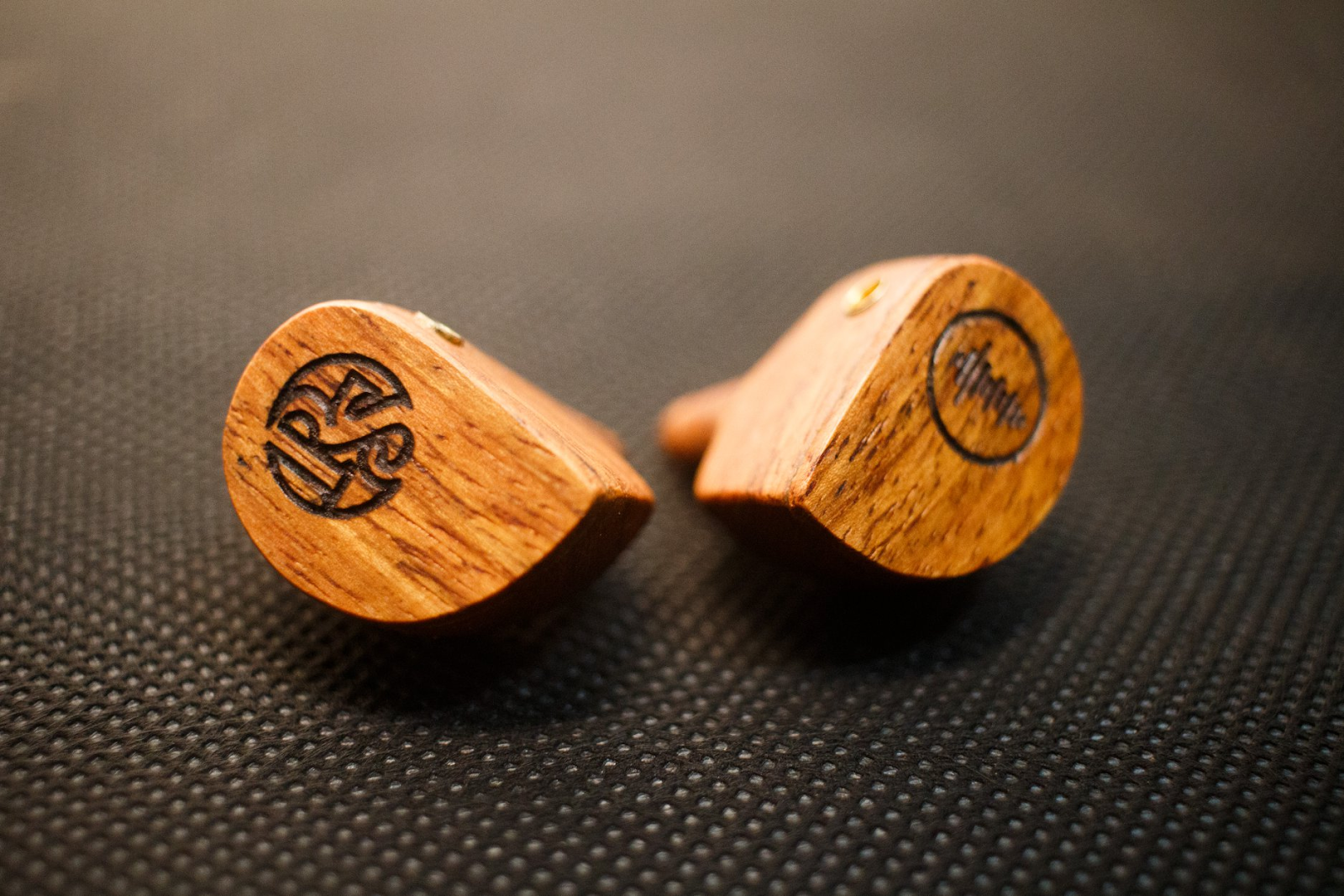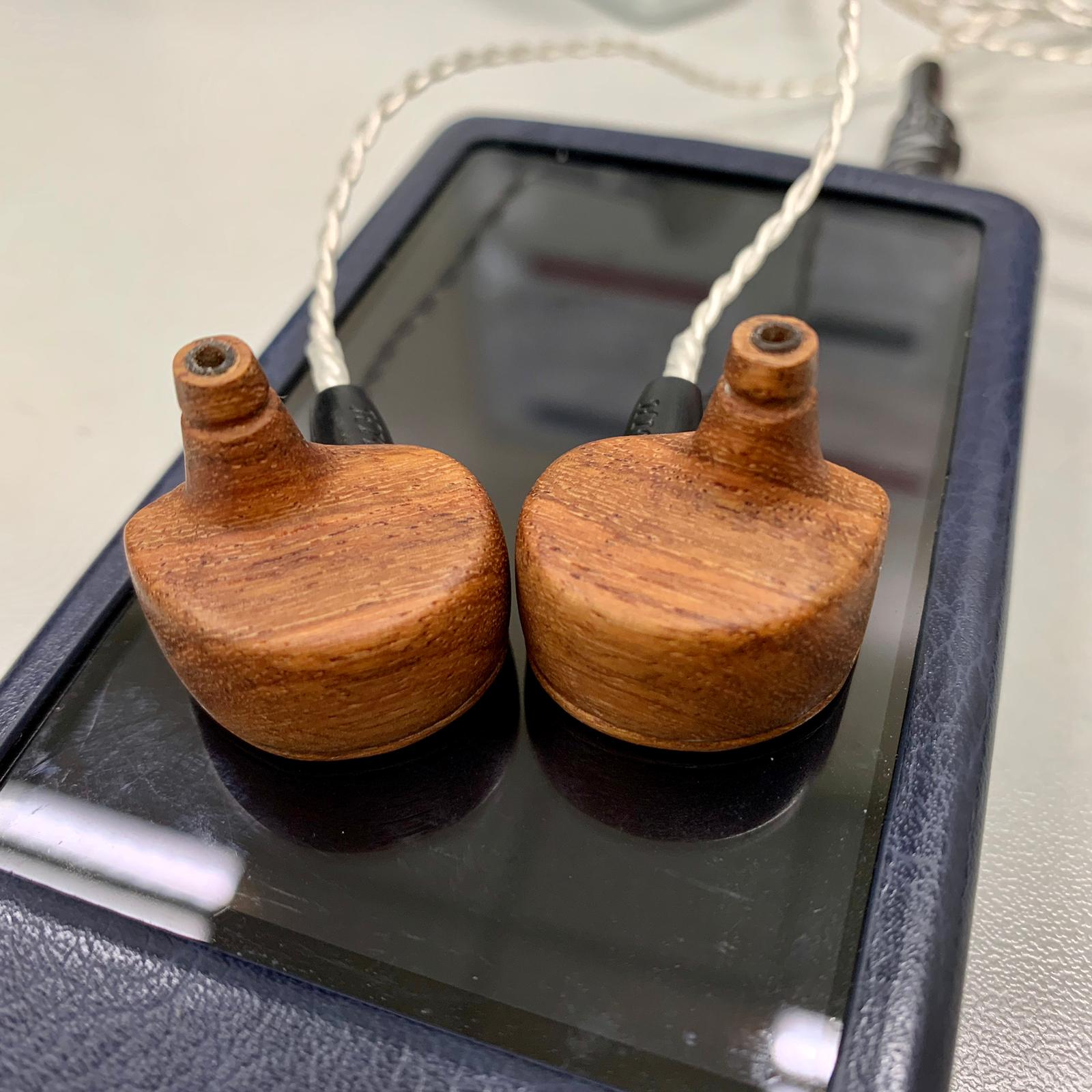Phonic BW3 (Mk2) Silver Wire Edition - Handmade Wooden 3BAs IEMs
Frequency Response: 20-20k Hz
Resistance: 11 ohms
Sensitivity: 113dB@1k Hz
BA: Three Knowles Per Side
Wood: African Padauk
https://www.phoniciem.com/product/bw3/

These IEMs are one of a kind - handmade wooden 3BAs IEMs made by......not me...... but a brass playing young fellow in Hong Kong, who owns Phonic IEMs. These are made of African Padauk. Also, the monitors used silver wiring, (so it is called SWE - silver wire edition).
I love wood products. But when I came across Phonic's online catalog, actually just three weeks ago, I had approached this craft art with more curiosity than expectation. In the earth with new IEMs being rolled out every day, from all the hybrids / tribrids which sell multi-thousand bucks to all the budget Chi-fi IEMs loaded with 10+ BAs, I thought I have seen it all (if not tried them all).
So what did I expect about these IEMs three weeks ago?
- A reinterpretation of a hobby I love. [Translation: A reason to buy a pair of IEMs with something interestingly new.]
- IEMs with more than a hint of craftsmanship. [Translation: Another hip new pair of IEMs I could show off to my friends.]
- A small but meaningful participation in the design process of these IEMs [Translation: To provide myself with a small reason to get away from all the turmoils and plagues and economical and political catastrophes and worries and melancholia we were all in.]
- Not much about sound, I guess.
And so, do these IEMs help achieve these expectations? A firm Yes, for the first three. And they actually sound good and fun!
(The paragraphs below are by no means a review. I am a user, not a critical reviewer. I have always mixed up all the formidable sound describing terminologies. So please bear with me - just see my words below nothing more than a stream of conscious-esque mumbling.)
Package:
For handmade IEMs, the package is what I would call rudimentary. There is no paper-and-plastic presentation box, no user manual by technical writers, no thank-you-for-buying-our-product card, or no any small cleaning tools or any gizmos. The IEMs do come with a cable (you may choose a 3.5 or a Lighting termination) and a brown protection zipper case which I politely say no to. (Out of environmental concern. And of course, nothing would suppress that cozy Campfire Audio’s leather case that kept my Andromeda safe).
The Look:
“Gorgeous” is the first word when Phonic showed me the finished product of my pair. My pair is made of African Padauk – on Phonic’s website it is mentioned that:
[T]he wood density is about 0.72g/cm3, which is the lower density of the five types of wood, strong low frequency, and strong dive ability. African Padauk is also often used for furniture, with a unique woody scent.
Honestly, switching between this Afican Padauk and other types of wood materials in the offering, I could not sense any discernible difference there by my less than sensitive ears. So I opted for African Padauk because of the light colour and subtle wood pattern. The faceplates could be customized by having the logos or words laser-engraved on them. And the logo containing my initial on the right plate pairs pretty well with the Phonic logo.

Don’t expect two IEMs of the same pair are 100% symmetrical like those factory-made, precisely-cut products. The shells and the chambers are carved out from wood by hand; even with good craftsmanship, there would still be slight traits of asymmetry between monitors. To me, acceptable; but those with OCD should look away.

During the two-week production, Phonic sent me photos of having the IEMs body varnished by Danish oil.
The Initial Glitches:
As the monitor bodies are cut out from a wood log or else, the shapes of them may not readily fit every ear in the world. To me, though, the fit is OK but not excellent. The sound outlets are long, because, Phonic told me, it would be very difficult to hand-carve short outlets on the monitor bodies. So the shells of the monitors would stick out from my ears quite a bit.
When I just got hold of the new iems, I used an after-market cable (Nocturnal Audio Acrux silver cable) without the memory wires, and I had some initial struggle and snuggling with the positions of the monitors and the cable. Then I switched to the great but stiff ALO SXC-8 with the memory wires, which posed an even bigger problem with the positioning. Edit: Using ALO Reference 8 with memory wire, and it helps the monitors to have the best fit and seal. Thankfully when I switched back to Acrux and used the SpinFit tips, the monitors then sit nicely on my ears. With these tips, the isolation has been quite remarkable and I could be immersed in music even listening to it in a noisy environment..
They sound nice…… more about sound will follow…...
Frequency Response: 20-20k Hz
Resistance: 11 ohms
Sensitivity: 113dB@1k Hz
BA: Three Knowles Per Side
Wood: African Padauk
https://www.phoniciem.com/product/bw3/
These IEMs are one of a kind - handmade wooden 3BAs IEMs made by......not me...... but a brass playing young fellow in Hong Kong, who owns Phonic IEMs. These are made of African Padauk. Also, the monitors used silver wiring, (so it is called SWE - silver wire edition).
I love wood products. But when I came across Phonic's online catalog, actually just three weeks ago, I had approached this craft art with more curiosity than expectation. In the earth with new IEMs being rolled out every day, from all the hybrids / tribrids which sell multi-thousand bucks to all the budget Chi-fi IEMs loaded with 10+ BAs, I thought I have seen it all (if not tried them all).
So what did I expect about these IEMs three weeks ago?
- A reinterpretation of a hobby I love. [Translation: A reason to buy a pair of IEMs with something interestingly new.]
- IEMs with more than a hint of craftsmanship. [Translation: Another hip new pair of IEMs I could show off to my friends.]
- A small but meaningful participation in the design process of these IEMs [Translation: To provide myself with a small reason to get away from all the turmoils and plagues and economical and political catastrophes and worries and melancholia we were all in.]
- Not much about sound, I guess.
And so, do these IEMs help achieve these expectations? A firm Yes, for the first three. And they actually sound good and fun!
(The paragraphs below are by no means a review. I am a user, not a critical reviewer. I have always mixed up all the formidable sound describing terminologies. So please bear with me - just see my words below nothing more than a stream of conscious-esque mumbling.)
Package:
For handmade IEMs, the package is what I would call rudimentary. There is no paper-and-plastic presentation box, no user manual by technical writers, no thank-you-for-buying-our-product card, or no any small cleaning tools or any gizmos. The IEMs do come with a cable (you may choose a 3.5 or a Lighting termination) and a brown protection zipper case which I politely say no to. (Out of environmental concern. And of course, nothing would suppress that cozy Campfire Audio’s leather case that kept my Andromeda safe).
The Look:
“Gorgeous” is the first word when Phonic showed me the finished product of my pair. My pair is made of African Padauk – on Phonic’s website it is mentioned that:
[T]he wood density is about 0.72g/cm3, which is the lower density of the five types of wood, strong low frequency, and strong dive ability. African Padauk is also often used for furniture, with a unique woody scent.
Honestly, switching between this Afican Padauk and other types of wood materials in the offering, I could not sense any discernible difference there by my less than sensitive ears. So I opted for African Padauk because of the light colour and subtle wood pattern. The faceplates could be customized by having the logos or words laser-engraved on them. And the logo containing my initial on the right plate pairs pretty well with the Phonic logo.
Don’t expect two IEMs of the same pair are 100% symmetrical like those factory-made, precisely-cut products. The shells and the chambers are carved out from wood by hand; even with good craftsmanship, there would still be slight traits of asymmetry between monitors. To me, acceptable; but those with OCD should look away.
During the two-week production, Phonic sent me photos of having the IEMs body varnished by Danish oil.
The Initial Glitches:
As the monitor bodies are cut out from a wood log or else, the shapes of them may not readily fit every ear in the world. To me, though, the fit is OK but not excellent. The sound outlets are long, because, Phonic told me, it would be very difficult to hand-carve short outlets on the monitor bodies. So the shells of the monitors would stick out from my ears quite a bit.
When I just got hold of the new iems, I used an after-market cable (Nocturnal Audio Acrux silver cable) without the memory wires, and I had some initial struggle and snuggling with the positions of the monitors and the cable. Then I switched to the great but stiff ALO SXC-8 with the memory wires, which posed an even bigger problem with the positioning. Edit: Using ALO Reference 8 with memory wire, and it helps the monitors to have the best fit and seal. Thankfully when I switched back to Acrux and used the SpinFit tips, the monitors then sit nicely on my ears. With these tips, the isolation has been quite remarkable and I could be immersed in music even listening to it in a noisy environment..
They sound nice…… more about sound will follow…...
Last edited:








